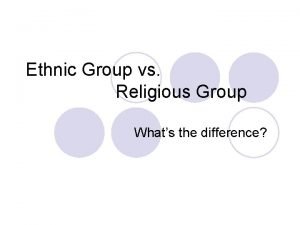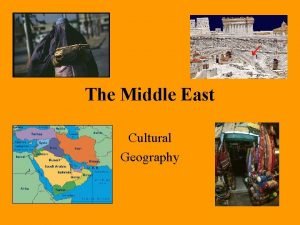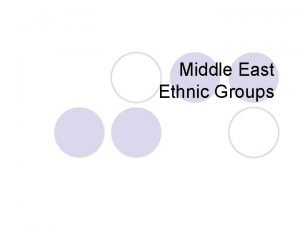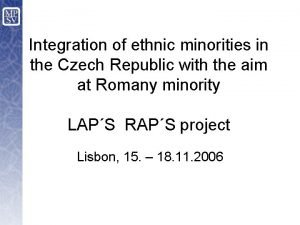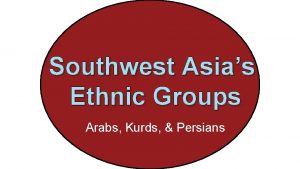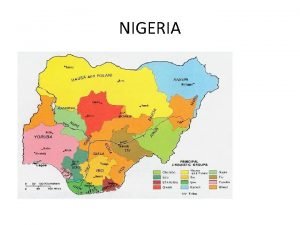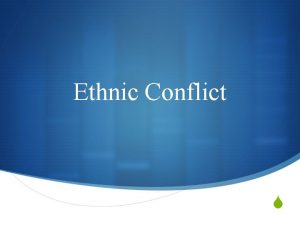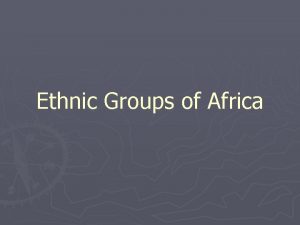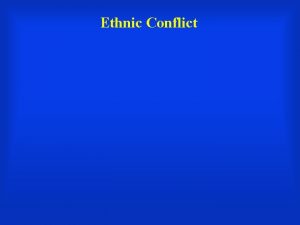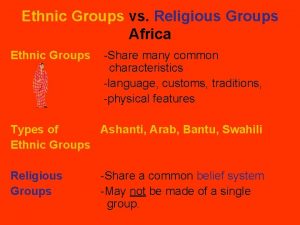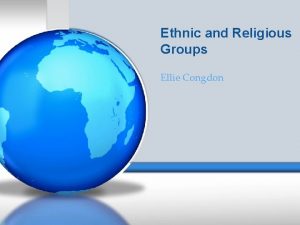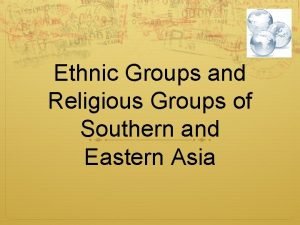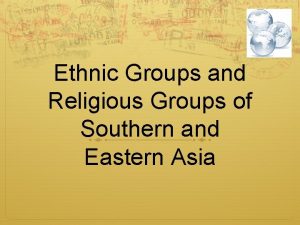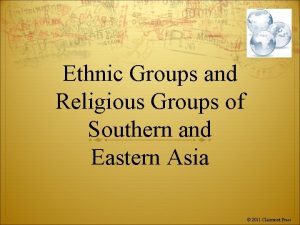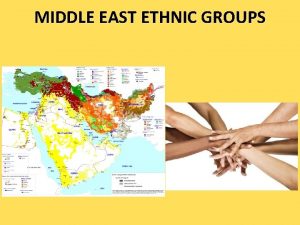Ethnic Groups and Religious Groups of Southern and











- Slides: 11

Ethnic Groups and Religious Groups of Southern and Eastern Asia

Comparisons and Contrasts Ethnic Groups Religious Groups Identify with each other through a common heritage Identify with each other through a common religion A common language A denomination is a sub -group of a religion A common culture May be spread throughout the world A common ancestry A shared interest in a geographic region Generally regard one region as a holy land or sacred place

Ethnic Groups of Southern and Eastern Asia In India, there are 1, 652 different languages spoken Indian society is divided into castes or clans rather than ethnic groups China officially recognizes 56 different ethnic groups The largest is the Han Chinese The “one child only” policy applies to the Han Chinese

Major Religions of Southern and Eastern Asia

Hinduism Founded in 1500 BC The Books of Knowledge Contained holy hymns Called Vedas Polytheism Belief in many gods or goddesses Reincarnation Soul does not die with the body and enters another being Evil people will suffer in the next life Karma - actions determine fate

Hinduism continued Ultimate goal in life is to achieve Moshka – which is freedom from reincarnation Believe in Karma – ones actions determine their fate Believe in caste system – divides citizens up into different “classes” Brahmans (_high priests/holy_) Kashatriyas (soldiers) Vaishyas (_merchants/artisans/traders) Shudras (laborers) 5 th caste untouchables You are born into your caste and cannot move to a different one Followers are called Hindus

Buddhism Founded in 500 BC Siddhartha Gautama Rich nobleman who was troubled by poverty and suffering Became a wondering monk until he simply sat and meditated on the unhappiness of man. Man will not be happy until he rejects greed and desire. He became “enlightened” and took the name of “Buddha” or the “The Enlightened One. ”

Buddhism continued Four Noble Truths – basic instructions about Buddhism Holy book is called the Tripitaka and contains the teachings of Buddha Ultimate goal is to reach nirvana– state of peace Believe in _following the Middle Way or Eightfold path_ Followers are called _Buddhists____

Islam Founded 7 th century AD Five Pillars of Islam 1. Profession of faith There is only one god and Muhammad is his prophet 2. Pray five times a day facing Mecca 3. Charity 4. Fasting during Ramadan 5. Pilgrimage to Mecca at least once in life

Shinto The earliest religion of Japan Shinto means “way of the gods” Reverence for the kami, divine spirits that live in nature Prayers and rituals to honor or please the kami

Confucianism NOT a religion, but it a PHILOSOPHY Widely practiced in China, said to be the foundation of Chinese history culture Confucius was the most important scholar in Chinese history. Social order is key to peace Golden Rule of Behavior What you do not like when done unto yourself, do not do unto others. Five Basic Relationships Ruler and Subject Father and Son Husband Wife Older Brother and Younger Brother Friend and Friend
 How are ethnic groups and religious groups related
How are ethnic groups and religious groups related What's the difference between ethnic and religious group
What's the difference between ethnic and religious group Ethnic groups in the middle east
Ethnic groups in the middle east Relative location spain
Relative location spain Ethnic groups in the middle east
Ethnic groups in the middle east Brain wrinkles southwest asia
Brain wrinkles southwest asia Ethnic groups in czech republic
Ethnic groups in czech republic Write 5 ethnic groups you know in panama en español
Write 5 ethnic groups you know in panama en español Ethnic groups in the allegheny plateau
Ethnic groups in the allegheny plateau Kaaba location
Kaaba location What are the 250 ethnic groups in nigeria
What are the 250 ethnic groups in nigeria Ethnic groups
Ethnic groups

